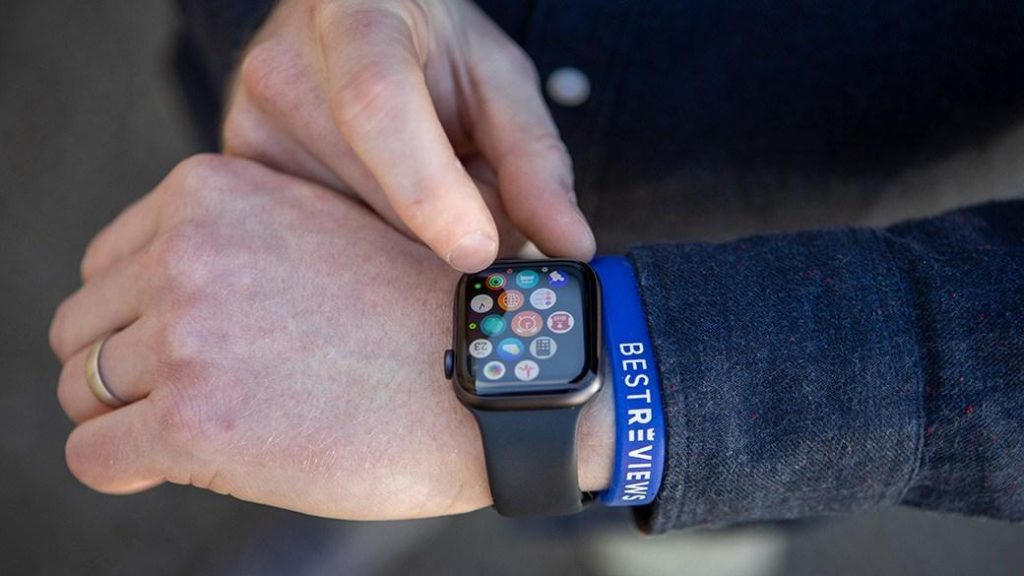At a routine physical, Marylin Spunar was shocked to hear that she had been diagnosed with atrial fibrillation at 51 years old, an irregular heart rhythm that if left untreated can lead to a stroke. At the appointment, her doctor told her about a feature on her Apple Watch that could monitor her heart rate.
“I turned it on and sure enough, I get the alert like five or six times a day because with Afib it’s constant. It sort of gets annoying,” Spunar said.
Just 10 months after seeing a cardiologist and receiving treatment, an alert on her watch let her know that the irregular heart rate was back.
“If I did not have that watch. I wouldn’t know. I really wouldn’t,” she said. “Because of the watch, I feel and my doctors feel confident that I’m going to know when it happens.”
Symptoms for atrial fibrillation, commonly known as Afib, include fatigue, heart palpitations, trouble breathing and dizziness. Afib is one of the most common arrhythmias. Risk factors for Afib include high blood pressure, coronary artery disease and obesity.
Related Articles
The crisis of low testosterone and what doctors advise patients
Why don’t California parental leave laws protect pregnant elected officials?
Silicon Valley guys make their point by wearing heels for the YWCA
Older men die by suicide at steep rates. Here’s how the VA is trying to change that
A program funded by soda tax helps low-income residents buy fruits and vegetables
Most people diagnosed with Afib are in their 50s or 60s, but according to Dr. Yasser Rodriguez, an electrophysiologist at Cleveland Clinic Weston, diagnoses for Afib are increasing — and the patients are getting younger.
“With the increasing obesity epidemic, we’re seeing a lot more sleep apnea and obesity in younger people, which is shifting the patients closer to their 50s,” Rodriguez said.
Dr. Pedro Martinez-Clark, medical director and CEO of Amvita Heart & Vascular Health, also attributes the younger age of diagnosis to better technology, like wearable devices, which have allowed for conditions to be detected, diagnosed and treated at an earlier stage.
More and more people are using wearable devices like smartwatches and fitness trackers to monitor their physical activity and well-being. However, others, like Spunar, are using them to help with early detection and management of medical conditions.
When it comes to wearable technology, many devices are available to consumers, but not all are FDA-approved. The most common devices, Apple Watch and Fitbit, have been cleared by the FDA to identify Afib.
“I think these technologies are definitely a significant move forward in our ability to detect patterns of risk,” Martinez-Clark said. “But just like anything else, there are positives and negatives.”
What wearable devices can do
Wearable devices offer a range of features, from tracking activity levels and sleep quality to monitoring vital signs, such as heart rate and blood pressure. This can be helpful to detect irregularities in heart rates for patients that are less symptomatic.
“Let’s say you’re having dinner and you’re relaxed, and then your heart rate is at 140-150; that’s abnormal,” Martinez-Clark said. “In the absence of symptoms, wearable technology can tell us that there is a fast rate in a situation where it shouldn’t be fast.”
According to Martinez-Clark, what may be even more important than detecting an arrhythmia is keeping track of the frequency and regularity of the arrhythmia. Because symptoms can vary, this is the critical information doctors will use when making a diagnosis — a task wearable devices have made easier for potential patients.
“Regardless of the age of the patient, irregular heart rhythms can have very serious implications,” Martinez-Clark said.
What wearable devices can’t do
On the flip side, obsessive tests and false alarms are just a few reasons why physicians advise the public to take the wearables’ advice with caution.
“Companies would rather over-call things than under-call them, and because they’d rather over-call, make sure they’re not missing anything than the other way around,” Rodriguez said. “A lot of times that patient will come and it’s not exactly atrial fibrillation, it’s something else that’s much more benign.”
For example, with younger people, an out-of-the-ordinary fast heartbeat could be normal, but would trigger false alarms. And for patients with significant anxiety, detection and alerts can trigger even more anxiety.
“We actually recommend to those patients not to wear those devices,” Martinez-Clark said.
Another problem with the readings done by a smartwatch or fitness tracker is the varying levels of interference. According to Dr. Andre Landau, interventional cardiologist at Broward Health North, in a test done by a physician, the skin is disinfected and sometimes shaved to create close contact. Not only that, for the entire test, the patient stays still.
“If the patient is moving at the time of the recording, it makes the recording more difficult to interpret,” Landau said.
Because of this, medical professionals strongly urge the public to visit a physician and get properly tested if they feel symptoms or receive alerts that an arrhythmia was detected.
For symptomatic patients or those who have experienced a stressful situation, like a stroke, Landau recommends a more sophisticated device, like KardiaMobile, an FDA-approved device to detect Afib, to monitor electrical signals in the heart.
“It’ll record an EKG, transmitted to your cellphone, that you can text or email to a doctor for more analysis,” Landau said.
New treatment for Afib launching at Cleveland Clinic
On Monday, Cleveland Clinic Weston is launching a new treatment for Afib known as “Pulsed-Field Ablation.” PFA is a non-thermal treatment method that promises faster procedure times and less risk to adjacent structures.
“It’s just completely revolutionary. I don’t want to overuse that word, but I probably will not see another technology in my career that is as disruptive as this was overnight,” Rodriguez said.
The catheter ablation therapy uses electroporation, or the delivery of rapid, high-voltage pulsed electrical fields to tissue, causing cell membranes to become permeable, to treat cardiac arrhythmias.
“It’s almost instantaneous,” Rodriguez said. “Every treatment is 2.5 seconds. With the older technology it was 10 to 15 seconds. You’re getting the entire vein and you’re getting it in seconds.”
According to Rodriguez, there are at least 12 million people in this country that have been formally diagnosed with Afib, and projections are “going sky high.”
“I tell everybody, you have to go for that annual physical,” Spunar said. “Because even if you don’t have the watch, at least your physical can capture some of this.”


